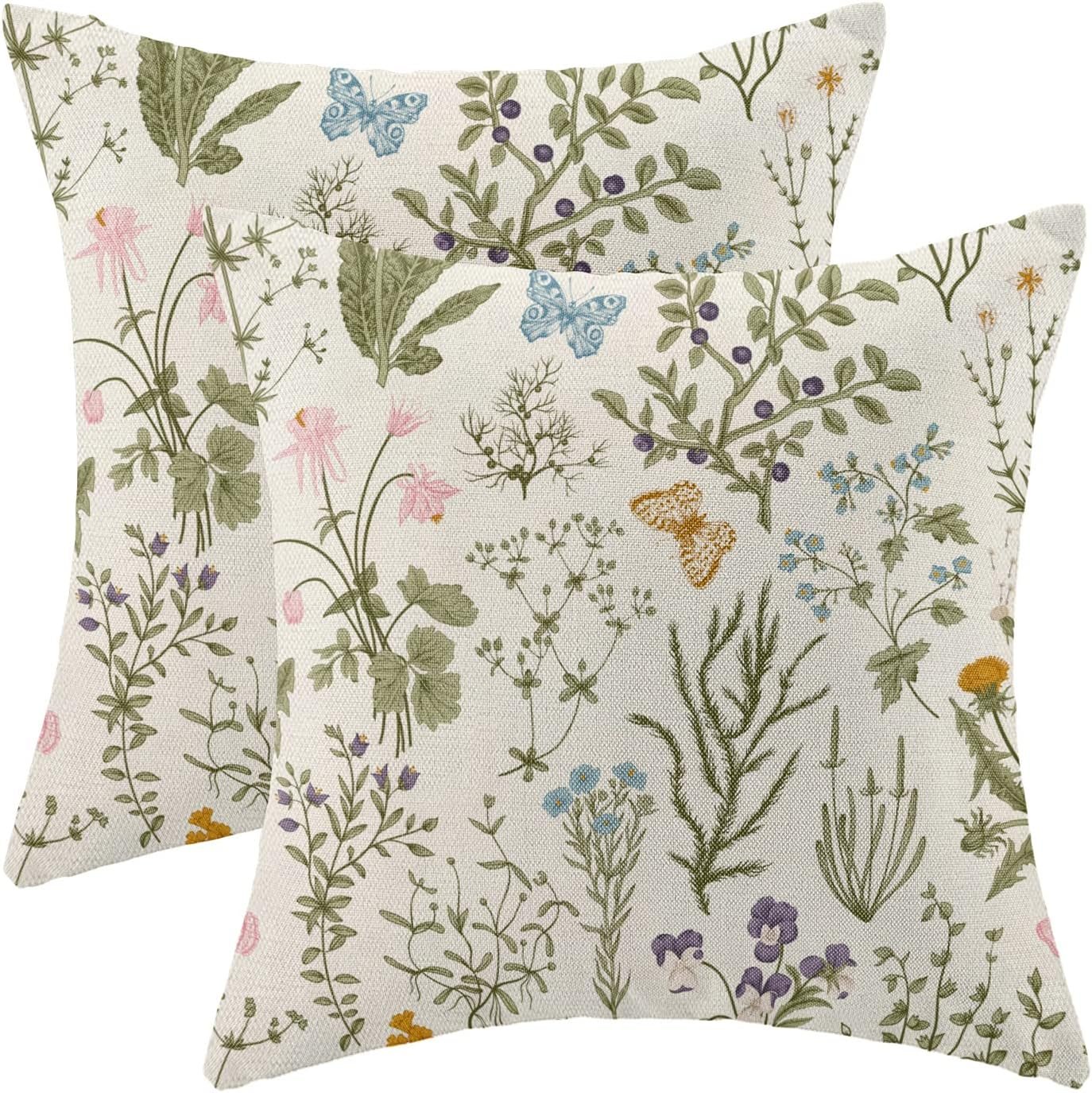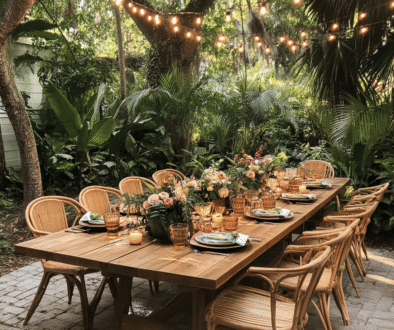Charming Speckled Egg Place Card Holders
Easter is one of my favorite holidays to decorate for. There’s something magical about bringing spring indoors after a long winter, and I love the opportunity to get creative with natural elements and soft spring colors. Over the years, I’ve created countless Easter crafts, but there’s one that consistently earns the most compliments from my dinner guests: speckled egg place card holders.
These adorable little nests not only help your guests find their seats but also serve as charming take-home favors that will remind them of your special gathering. The best part? They’re surprisingly simple to make, even if you don’t consider yourself particularly crafty. I’m excited to share my step-by-step process so you can create these delightful decorations for your own Easter celebration this year.




Why Handmade Place Card Holders Make Your Easter Table Special
Before diving into the how-to, let me share why I think these place card holders are worth the effort. When I host Easter dinner, I want my table to feel thoughtfully prepared, not just hastily decorated. These little nests transform an ordinary dinner into an experience.
My guests always smile when they see their names perched in these tiny nests. Children especially love discovering “their” egg, and adults appreciate the personal touch. It’s these small details that turn a meal into a memory. Plus, handmade elements bring warmth to your table that store-bought decorations simply can’t match.
I’ve noticed that having designated place cards also eliminates the awkward “where should I sit?” moment when guests arrive. It allows me to thoughtfully plan seating arrangements that will encourage great conversation. When the meal is over, guests can take their little nest home – a sweet keepsake that continues to spread joy beyond just Easter Sunday.

Materials You’ll Need
One of the things I love about this project is that it requires relatively few materials, and they’re all easy to find. Here’s what you’ll need to gather before getting started:
- Air-dry clay (white or natural color works best)
- Small wooden beads (about 1/2 inch in diameter)
- Acrylic paint in eggshell blue, cream, and brown
- Small paintbrushes (including one with very fine bristles for speckling)
- Small piece of cardboard or a paper plate as a work surface
- Toothpick or wooden skewer
- Clear acrylic sealer spray (optional but recommended)
- Card stock in a spring color for name cards
- Pen with nice handwriting or a calligraphy pen
- Scissors
I usually buy air-dry clay at my local craft store, but you can also find it online. If you’re making a large number of place card holders, you might want to buy clay in bulk to save money. As for the wooden beads, craft stores typically carry these in their jewelry-making section, but you can also purchase bags of them online.

Step-by-Step Instructions for Creating Your Nests
1. Preparing Your Clay
I always start by kneading my air-dry clay until it’s soft and pliable. This step is important because it removes air bubbles and makes the clay easier to work with. I find it therapeutic to work the clay between my hands for a few minutes. If the clay feels too dry, you can add a tiny bit of water to your fingers while kneading, but be careful not to make it too sticky.
Once the clay is ready, I pinch off a piece about the size of a golf ball for each nest I plan to make. Keep the remaining clay wrapped in plastic to prevent it from drying out while you work.
2. Forming the Base of Your Nest
Roll the golf ball-sized piece of clay between your palms to form a smooth ball. Then, press your thumb gently into the center to create a small bowl shape. I like to place this bowl shape on my work surface and gently press the bottom to flatten it slightly so it sits stably on the table.
The next step is what gives these nests their realistic look. I roll small pieces of clay into thin “snakes” about the thickness of a pencil and about 3-4 inches long. These will form the coiled sides of your nest.
3. Building the Nest Walls
Starting at the base of your bowl, wrap the clay snake around the edge, gently pressing it into the base as you go. Continue adding more clay snakes, building upward and slightly inward to create the nest shape. I usually use 2-3 clay snakes for each nest.
After placing each coil, I use my fingers to gently blend the joins together on the inside of the nest, but I leave the outside fairly textured to mimic the look of a real bird’s nest. Don’t worry about making it perfect – real nests are wonderfully imperfect!
4. Adding Texture and Details
This is where your nest really comes to life. Using a toothpick or the end of a paintbrush, I gently press random indentations all around the outside of the nest. These little marks mimic the look of twigs and bits of grass in a real nest.
I also like to press my fingertip gently around the top edge of the nest to create a slightly uneven, natural-looking rim. Finally, I create a small depression in the center of the nest where the egg will sit. The depression should be just deep enough to hold your wooden bead securely.
5. Drying Your Clay Nests
Now comes the waiting game! Place your nests in a dry, room-temperature spot to dry completely. Depending on the clay you use and the humidity in your home, this could take anywhere from 24-48 hours. I like to check them occasionally and rotate them to ensure even drying.
The most important thing is to be patient and allow them to dry completely before painting. Rushing this step can lead to cracking or warping later on. I usually make my nests a few days before I plan to paint them, just to be safe.

Transforming Wooden Beads into Speckled Eggs
While your nests are drying, you can get started on creating your speckled eggs. This part of the project is particularly fun, and it’s a great activity to do with kids if you have little helpers.
1. Painting the Base Color
I start by painting each wooden bead with a base coat of eggshell blue or cream paint. I usually make a variety of both colors for a more natural, collected look. Apply the paint evenly and allow it to dry completely. Depending on the coverage, you might need to apply a second coat.
I’ve found that it helps to stick a toothpick into each bead to use as a handle while painting. You can stick the other end of the toothpick into a piece of styrofoam or a small box to hold the beads upright while they dry.
2. Creating the Speckled Effect
This is my favorite part of the entire project! To create realistic-looking speckled eggs, I dip a fine-bristled brush in brown paint, then hold it over the egg and gently flick the bristles with my finger. This creates tiny, random specks that look remarkably like real speckled eggs.
The key here is to start with a light touch – you can always add more speckles, but you can’t easily remove them if you add too many. I usually do this over a protected surface, as the paint can splatter beyond your intended target. An old cardboard box works perfectly for containing the mess.
3. Adding Final Touches and Sealing
Once you’re happy with your speckled eggs and they’ve dried completely, you can optionally spray them with a clear acrylic sealer to protect the paint job. This is especially important if you think your guests might want to keep their place card holders for display beyond Easter.
Make sure you spray the sealer in a well-ventilated area, following the manufacturer’s instructions. One light coat is usually sufficient, but allow it to dry completely before handling the eggs.

Assembling Your Place Card Holders
Now comes the fun part – putting everything together to create your finished place card holders!
1. Painting Your Dried Nests
Once your clay nests are completely dry, paint them in natural tones. I prefer to use a mottled approach, mixing browns, tans, and a touch of gray to mimic the look of natural materials. I apply the paint somewhat unevenly, allowing bits of the clay to show through in places for a more realistic effect.
Allow the paint to dry completely before proceeding to the next step. If you’d like, you can also apply a clear sealer to the nests, but I often leave mine unfinished for a more natural, matte appearance.
2. Creating Name Cards
For the name cards, I cut small rectangles from card stock – approximately 1 inch by 2 inches works well. I write each guest’s name using my best handwriting or calligraphy. If you’re not confident in your handwriting, you can also print the names from your computer in a pretty font.
I like to fold the cards slightly in the middle, creating a tent shape that will stand up better in the nest. You could also curl the paper slightly to give it more dimension.
3. Final Assembly
Place a speckled egg in the center depression of each nest. Then position the name card either leaning against the egg or tucked slightly behind it. The slight weight of the egg helps to hold the card in place.
Take a step back and admire your work! These little nests look delightful clustered together as you prepare them, but they’ll look even more special distributed around your Easter table.

Creative Variations to Try
While I love the classic version of these place card holders, I’ve experimented with several variations over the years. Here are some ideas you might want to try:
Color Variations
Instead of the traditional blues and creams, you could paint your eggs in soft pastels like pink, lavender, or mint green. These colors look beautiful for spring and can complement your other Easter decorations.
I’ve also created a more elegant version using metallic paint for the eggs – gold speckles on cream eggs look particularly stunning for an upscale Easter dinner.
Size Variations
Consider making mini versions of these nests to use as favors or decorative elements elsewhere in your home. Tiny nests with even smaller beads can be adorable scattered down the center of your table as part of a larger centerpiece.
Alternatively, you could make one larger version to serve as a centerpiece, perhaps with several eggs nestled inside and some decorative moss around the base.
Material Variations
While I love the control that air-dry clay gives me, you could also create similar nests using twisted paper, natural materials like raffia, or even yarn wrapped around a balloon form (similar to making a yarn bowl).
Each material creates a different look and texture, allowing you to customize the project to suit your personal style and the overall aesthetic of your Easter table.

Troubleshooting Common Issues
Over the years of making these place card holders, I’ve encountered a few common issues. Here’s how I solve them:
Cracking Clay
If your nests develop small cracks while drying, don’t panic! You can often repair them by dampening your finger slightly and gently smoothing over the crack. For larger cracks, make a paste of clay and water and use it like spackle to fill in the damaged area.
Unstable Nests
If your finished nests wobble or don’t sit flat, you can create a stable base by applying a small amount of clay to the bottom and flattening it against your work surface. Just be sure to allow this repair to dry completely before painting.
Paint Not Adhering Well
If you find that the paint isn’t adhering well to your clay, try applying a thin layer of white craft glue diluted with water first. This creates a primer that helps the paint stick better. Allow it to dry completely before applying your paint.

Why These Place Card Holders Are Perfect for Easter
I’ve created many Easter crafts over the years, but these speckled egg place card holders remain one of my favorites for several reasons:
First, they perfectly capture the essence of spring and renewal that Easter represents. The nest symbolizes home and new beginnings, while the egg is the ultimate symbol of Easter and new life.
Second, they serve multiple purposes – they’re decorative, functional as place cards, and they double as favors. I love crafts that work hard for their place on my to-do list!
Finally, they create a talking point. I’ve found that handmade elements on my table often spark conversation among guests who might not know each other well. There’s something about appreciating a handcrafted item that brings people together.

Final Thoughts and Tips
After making these place card holders for several Easter celebrations, I’ve gathered a few final tips that might help you:
Start early! Clay needs time to dry, and you don’t want to be rushing through this project the night before your gathering. I usually begin about a week before Easter, which gives me plenty of time to work on them in short sessions.
Make extras! Inevitably, I find other uses for these adorable nests around my home, or I want to give some to friends who admire them. Having a few extra on hand is always a good idea.
Consider your table linens when choosing your paint colors. I like to make sure my nests and eggs complement my Easter table setting. If you’re using a floral tablecloth, you might want to pick out colors from the pattern for your eggs.
Take photos of your place settings! These little nests make your table look so special that you’ll want to remember it. I always take a photo of the table before guests arrive, and I’m always glad to have that memory preserved.
I hope this guide inspires you to create your own speckled egg place card holders this Easter. There’s something deeply satisfying about creating handmade decorations for holidays, especially when they bring so much joy to your guests. Happy crafting, and happy Easter!
What Easter crafts are you planning to make this year? I’d love to hear your ideas in the comments below!
If you love home decor and interior design as much as I do, check out these other articles I think you might like.
DIY Hand-Painted Easter Tea Towels: Add a Personal Touch
How to Create a Stunning Moss-Covered Monogram for Easter
How to Create Charming Egg Cup Succulents





Bringing Spring to Your Outdoor Spaces : A Complete Guide
April 6, 2025 @ 2:30 pm
[…] How to Create Charming Speckled Egg Place Card Holders […]